August 29th, 2024. My Thoughts on Google’s “Made by Google” Event, Google’s Apple Watch Copying, Project Astra and the Future
Hello everyone. We are going to change directions and talk about hardware (and AI).
Labor Day. One quick programming note. Monday is Labor Day in the U.S. Accordingly, the next update will go out on Tuesday. If you have the long weekend, make it a good one.
Apple Event. Earlier this week, Apple sent out invites to a September 9th product event at Steve Jobs Theater (Apple Park).
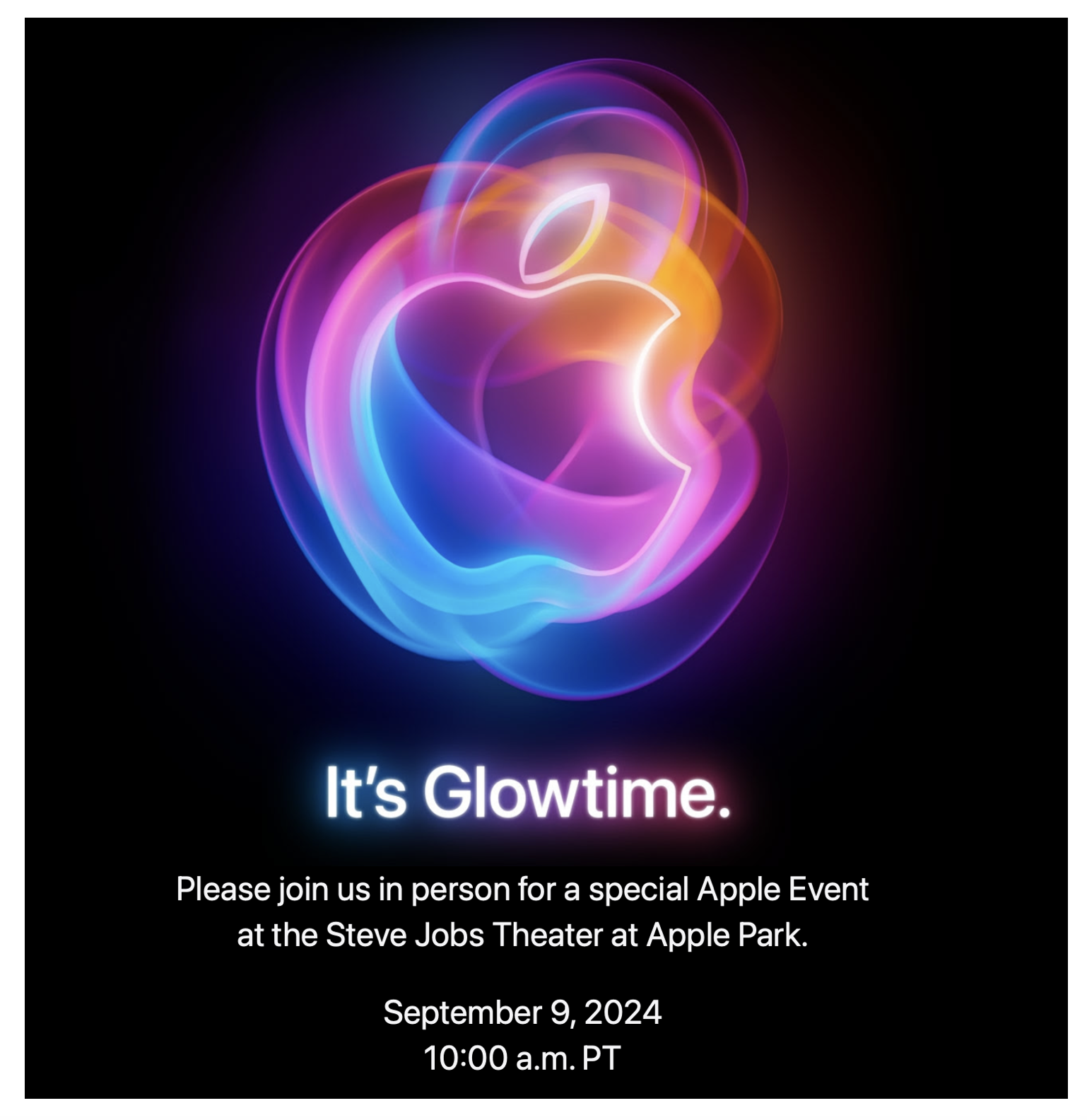
The invite is giving off major Apple Intelligence vibes. New iPhones (with Apple Intelligence) and Apple Watches are expected to be the major news.
My expectation is for Apple to use the same general game plan that was used for the September 2023 event. A taped presentation would be shown at Steve Jobs Theater, followed by some time with the new products. It’s sort of like the tech version of a Hollywood movie premiere.
For today’s update, we will focus on Google’s product event that took place two weeks ago at its Mountain View campus.
For those of you who are newer Above Avalon members, my approach in reviewing these events is to look at the big picture surrounding the products and features, in addition to what the company wants the public to focus on. What is the broader narrative being pushed? How does that differ from other companies?
Let’s jump in.
My Thoughts on Google’s “Made by Google” Event
The timing for Google’s event (can be watched here via YouTube) was unfortunate for the company. In the U.S., mid-August is still summer vacation season. The northern states go back to school a few weeks later than the southern states. It’s not ideal to unveil new products when a good portion of the U.S. is in summer vacation mode.
The problem for Google is that Apple owns September from a new product perspective. The annual iPhone and Apple Watch event, along with the news cycle associated with pre-ordering, reviews, and then the actual launches, captures so much media and press attention. Google determined it was better to go before, not after, Apple, to stand out. Google can also try to claim it beat Apple to market with certain features.
Google’s Rick Osterloh, who oversees Google’s new Platforms and Devices division, anchored the presentation. Osterloh began by saying how there have been a lot of promises and “coming soons” for AI in tech. (Yes.) Google was going to be different this time around by focusing on real world helpfulness when it comes to AI.
Google discussed how they have been working on a comprehensive approach with both Gemini (Google's multimodal model) available at scale via cloud as well as efficiently on device via Gemini Nano. This approach extends to having Gemini closely integrated with apps and Android. The basic idea that Google was pushing was similar to what is found with Apple Intelligence in the sense that AI is being built into the OS while being given the job of surfacing and engaging with our personal context.
One of Google’s key value propositions for positioning Gemini as something of an AI assistant is possessing six digital products with at least 2B+ monthly users. All six are now using Gemini to help users.
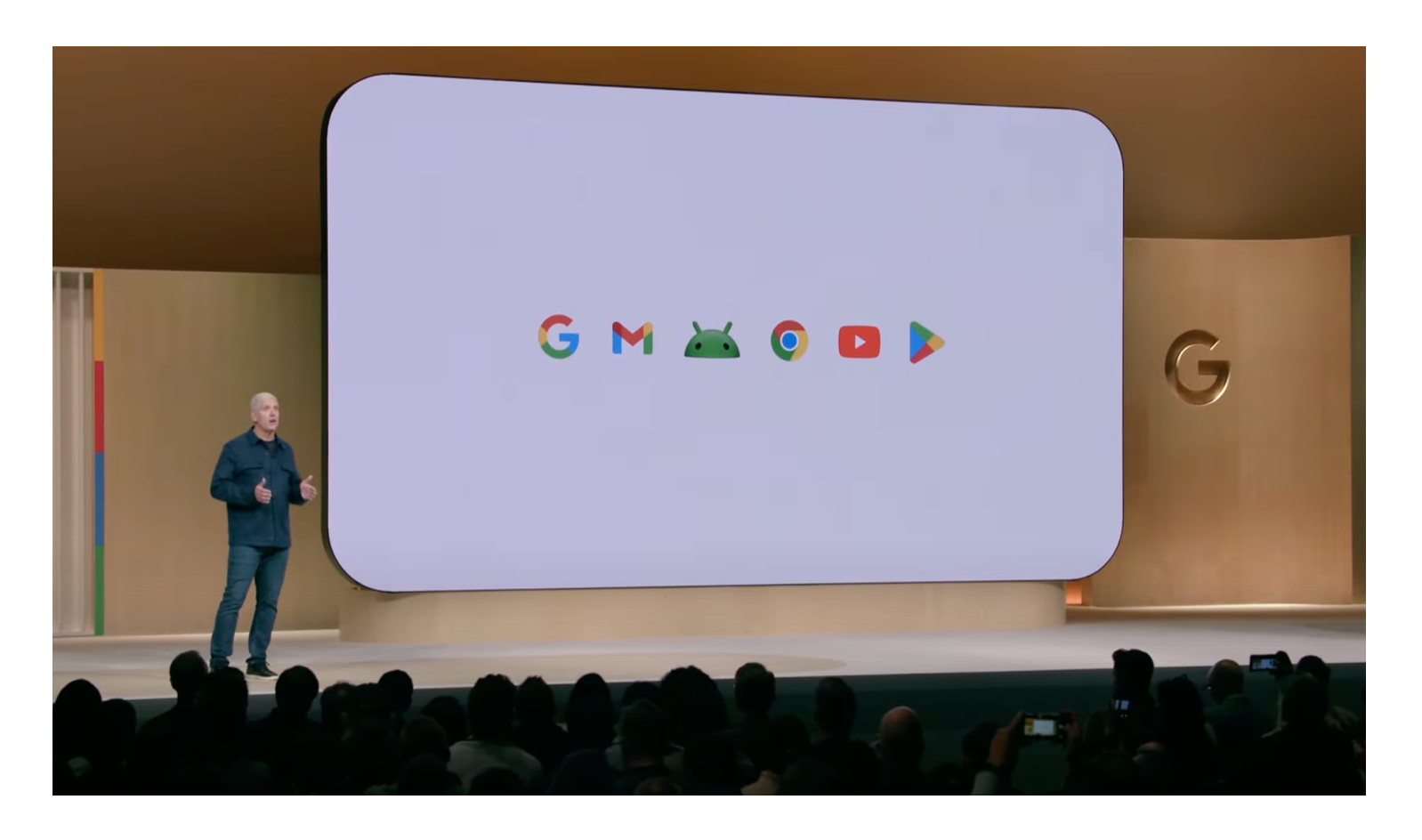
(click / tap image to enlarge)
Since Google held an in-person, live presentation, the company held various live demos involving Gemini. (Not surprisingly, Google had a few demo fails). Here were the Gemini on Android demos:
- Take a picture of a concert poster and see if you are free to attend a particular showing.
- Add items to a grocery shopping list.
- Ask for a list of food items being eaten in a YouTube video.
- Create a music playlist for a vacation.
- Write a formal email to landowner and professor.
- Converse with Gemini in a free-flowing conversation (Gemini Live - part of Gemini Advanced which is $20/month). The demo involved talking with Gemini to come up with things to do with children.
Attention then turned to Pixel hardware, which Google said was its platform for showing the best of Google AI. Pixel 9 is the first phone designed for the Gemini era. The following Pixel-only features were announced:
- Pixel Weather. Custom weather reports.
- Call Notes. Summarize your calls.
- Pixel Screenshots. Save, organize, and recall screenshots (there are some interesting things going on here).
- Pixel Studio (image generator). The demo involved creating a party invite (there’s a line that will be drawn between relying on AI as a modern version of doodling and clip art and something much more).
The Pixel camera received its own shoutout and AI-driven features:
- Add Me. Add someone to a photo to create a group photo.
- Made You Look. Aimed at getting kids to look for a picture (for Pixel 9 Pro Fold).
- Magic Editor (in Google Photos). Edit photos by reframing them and then swapping out things like fields of grass for flowers, adding hot air balloons etc.
We have previously talked about how some of these camera editing features have become controversial (and depressing) as we are quickly moving to the point of creating fake memories.
Google also unveiled an updated Pixel Watch, which we will talk about in greater detail shortly, and Pixel Buds Pro.
Overall, Google’s presentation definitively offered a saner vision of AI versus what we saw from companies in 2023. In some ways, the generative AI mania era is winding down and we are starting to see more practical use cases. That’s a good thing for consumers and the industry. Multimodality offers clear value that text-only or voice-only AI solutions lack. In addition, the close integration between a multimodal model and OS services and apps stands out. Another reason why Google’s presentation felt saner - the presentation slides came across as more Apple-y than usual. Google clearly looked at Apple's product presentations for inspiration (as shown below).
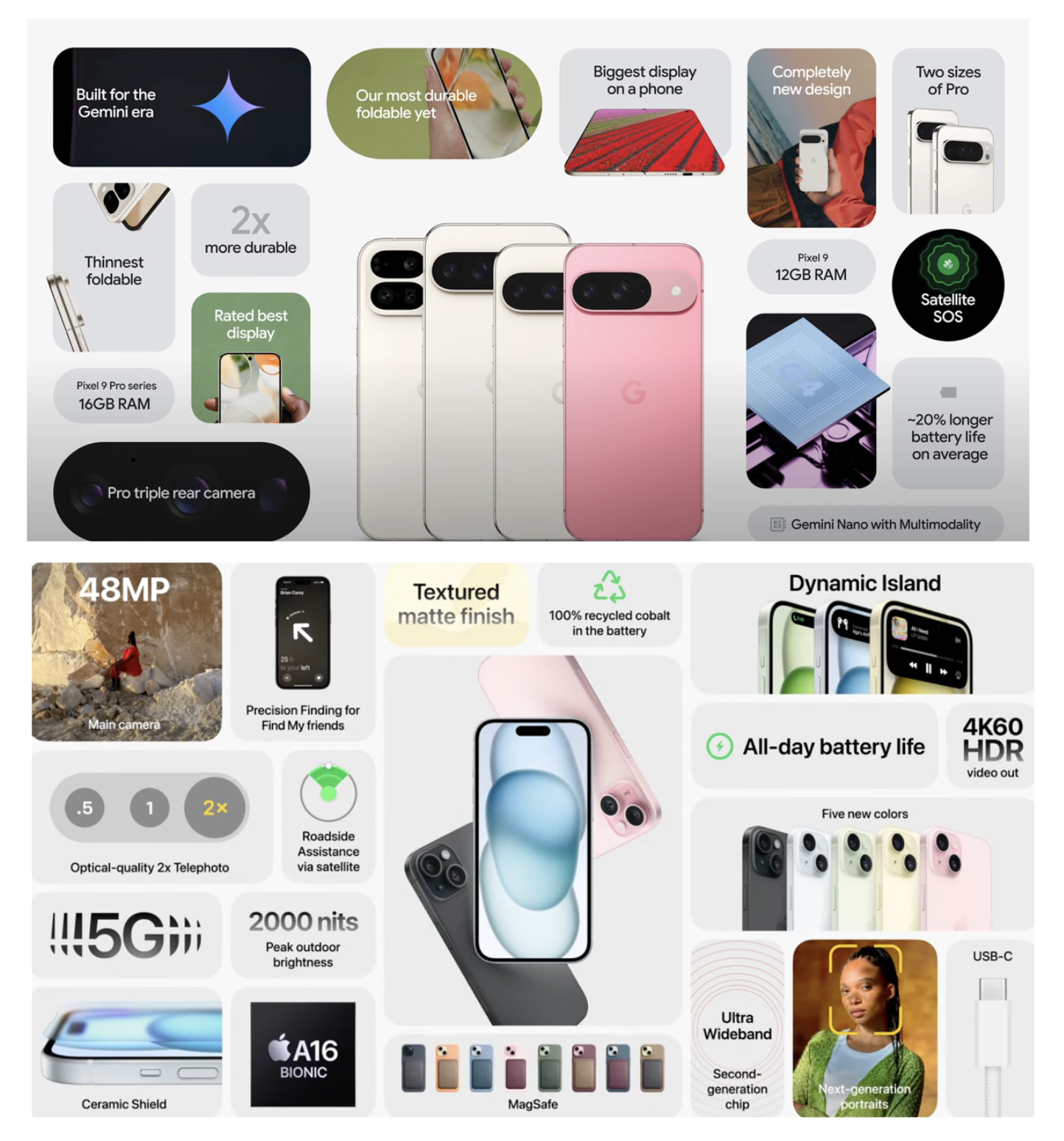
(click / tap image to enlarge)
Google has now fully embraced the bento grid design that Apple popularized with its presentations, although Google somehow did it worse.
From a competitive standpoint, this event is supposed to be Google’s response to iOS 18 and Apple’s upcoming new hardware. Apple executives likely are feeling good right now. One did not get the feeling of Google leapfrogging Apple in any areas that either Apple can’t respond to or which consumers will care about so much as to switch platforms. (Gemini Live did not strike me as one of Google's more compelling demos.) In addition, therecontinues to be no major HW pricing gap between Google and Apple. The Pixel 9 starts at $799 with Pixel 9 Pro at $999 and Pixel 9 Pro XL at $1,099. The Pixel 9 Pro Fold is $1,799 (will continue to be a very hard sell at that price). Pixel Watch 3 is similarly priced to flagship Apple Watches.
Google’s Apple Watch Copying
For years, my advice to Google was to take smartwatches seriously. Apple Watch was not some fluke or just an iPhone accessory.
There were some people within Google, and familiar with Above Avalon, who understood what was happening with Apple Watch. They understood that smartwatches would become vital devices in consumers' lives, in addition to playing a role in smartphone purchase equations. The problem was that smartwatch proponents within Google just didn’t have the support from senior leaders. This led to years of little to no progress.
Fast forward to the 2020s, and we have Google finally taking smartwatches seriously. However, there’s a catch. Apple Watch is clearly being used as inspiration for Pixel Watch. And that description is being kind to Google. We are at the point in which one can say there is too much copying taking place.
Check out the Pixel Watch 3 to Apple Watch SE:
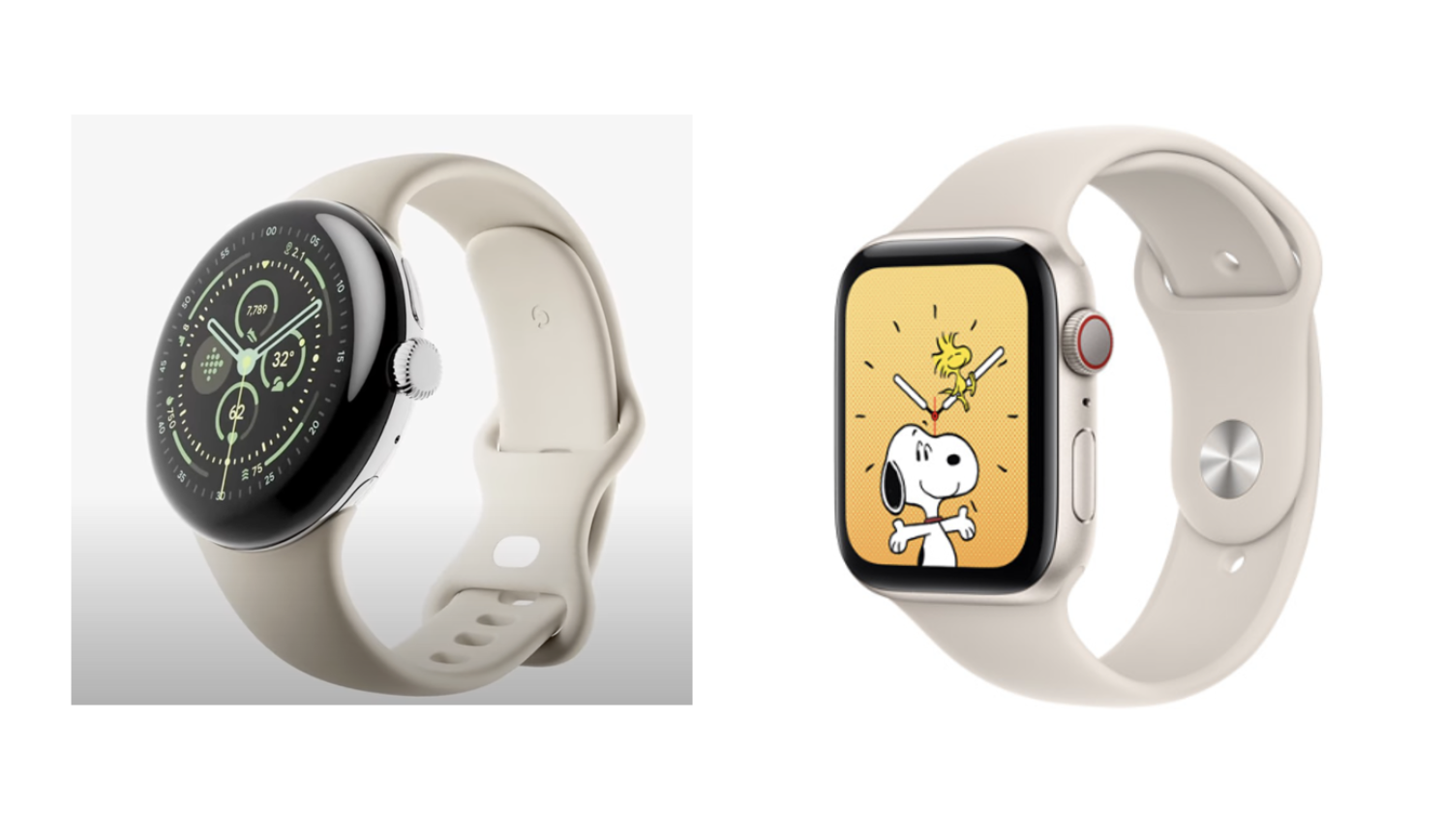
(click / tap image to enlarge)
This Pixel Watch 3 band looks familiar:
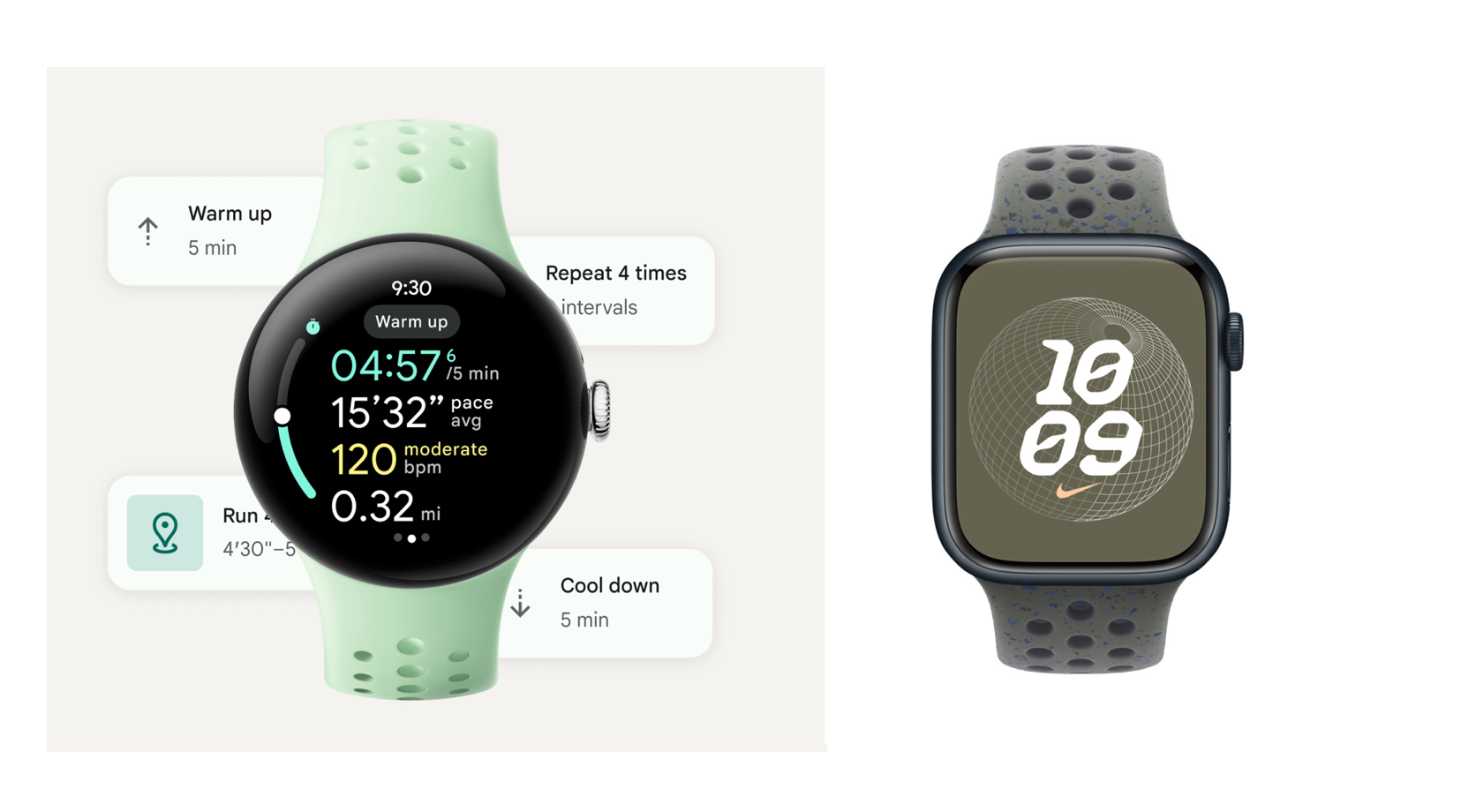
(click / tap image to enlarge)
As shown above, the Pixel Watch’s circular watch face / case remains the major design differentiator between Pixel Watch and Apple Watch. And yet, rectangular watch faces are better for displaying text and visuals on the wrist. It reminds me of someone copying a classmate but putting some wrong answers on purpose as to not be suspected of cheating by the teacher.
The similarities between Pixel Watch and Apple Watch extend to marketing. Here's the Pixel Watch 3 feature slide vs. Apple Watch Series 9 presentation slide:
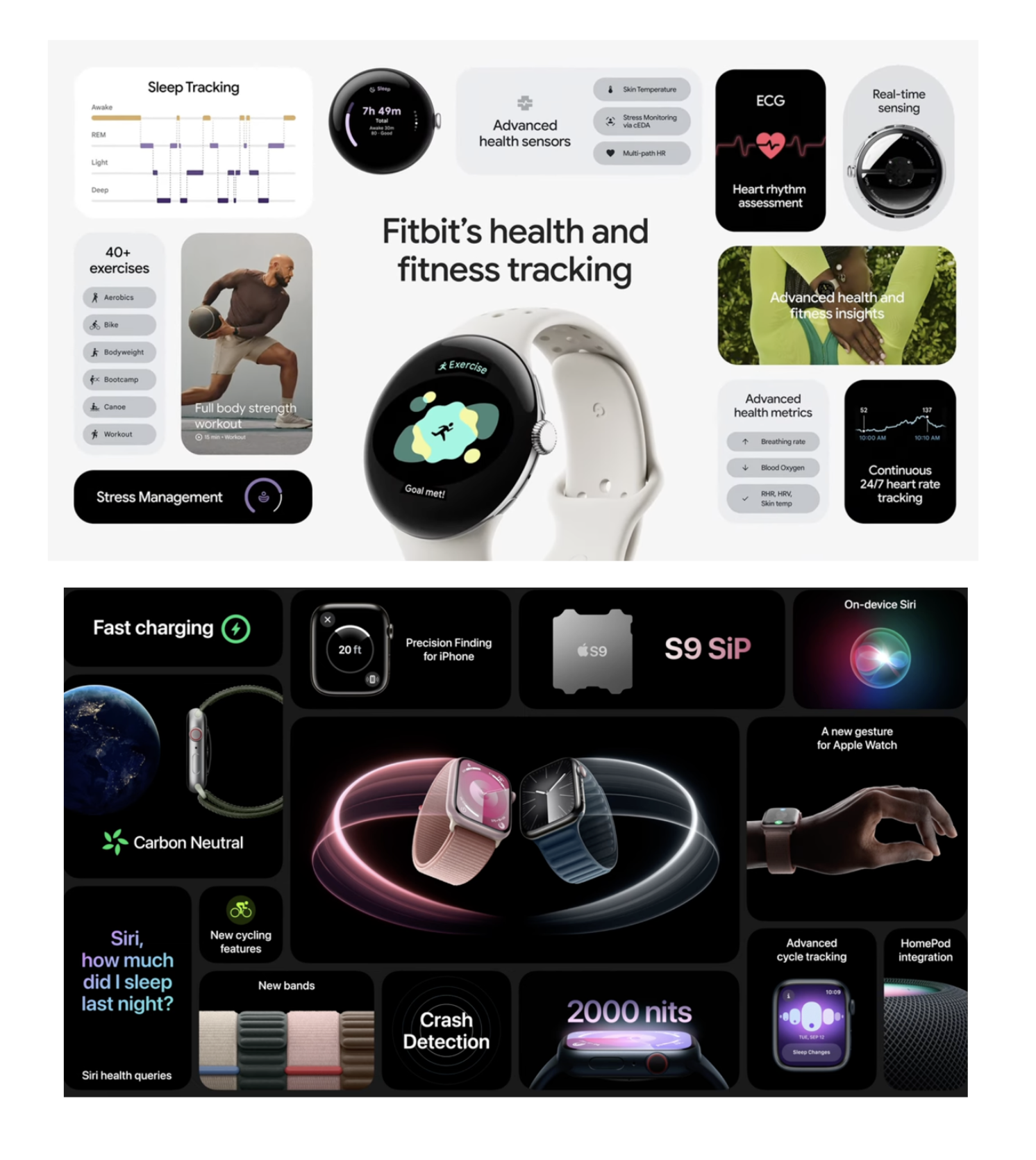
(click / tap image to enlarge)
Come on Google.
It’s as if someone studied Apple’s Apple Watch presentation slides. While these marketing similarities were also present with Pixel Watch 2, Google appears to have moved closer to copying Apple Watch.
In what ends up being aworrying trend for the smartwatch industry, the Apple Watch copying isn't found just with Google. Here's Samsung's new Galaxy Watch Ultra next to Apple Watch Ultra (from 2022):
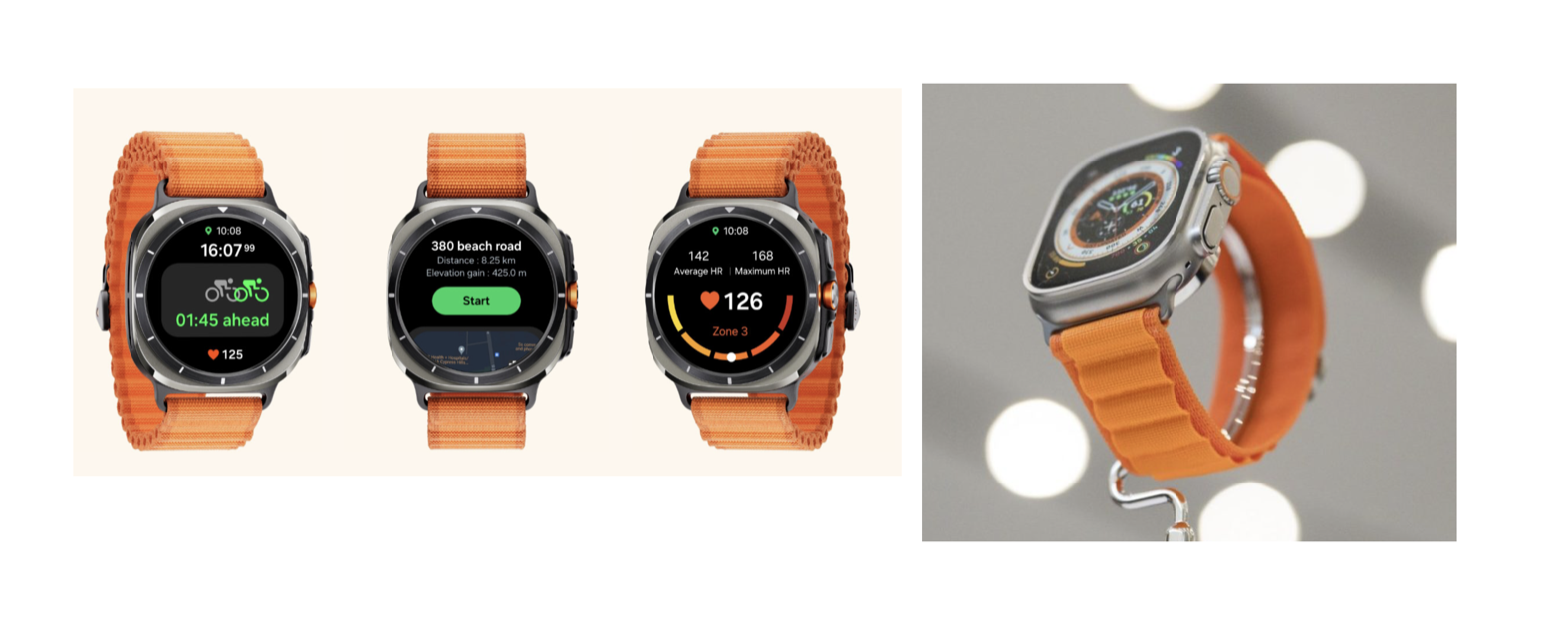
(click / tap image to enlarge)
My advice to Google, and Samsung, is to be more original. Don’t look at Apple Watch to decide where to bring Pixel Watch. It would be better for the industry if we have different takes on smartwatches. This includes rethinking Pixel Watch bands versus just using what Apple’s design team came up with a few years earlier. Take the smartwatch verticals that Apple isn’t pushing as quickly with, and decide if there is something there for consumers.
Since there is little to no pricing gap between Pixel Watch and Apple Watch until Google becomes more original with Pixel Watch, Apple Watch is going to continue to run away with the market.
Project Astra and the Future
As Google’s presentation was winding down, Osterloh reiterated how everything announced on stage was going to be released soon. You could tell Google was proud of that (and they should be). However, Google just couldn’t help themselves. They gave a sneak peek at something that wasn’t going to be released soon: Project Astra.
Project Astra was the highlight of this year’s Google I/O. Here was a snippet from my Google I/O review:
“Google showed several concepts where a smartphone was used to gather context and awareness of one’s office setting. The model was then able to answer various questions regarding what was captured. Google then showed the same utility in a smartglasses form factor (glasses with a camera), pointing out 'spatial understanding, video processing, and memory.' The company said people can have an expert assistant by their side through their phone or new exciting form factors like glasses. One would think Astra has given Google’s hardware pursuits greater priority within the company as the connection to hardware is clear, although HW still comes across as a distraction to the company.”
Google’s decision to give Astra a few minutes of stage time came across as the company wanting to plant its flag for what will likely be coming from every company in Big Tech.
One way of describing Project Astra is spatial computing (we will see if Google embraces Apple’s branding) meets multimodal AI. While some of the AI demos and examples being shown for traditional devices make sense – more so than AR examples on a smartphone – the true potential of this technology is to have it power spatial computers. We will have an “assistant” that both provides visual context to our surroundings throughout the day while also being available to handle certain requests and workflows. Every Big Tech company will approach this general framework from their own angle, although some companies will have built-in advantages in terms of design thinking and wearables acumen.
Listen to the audio version of this email via the Above Avalon Daily podcast. The podcast allows the emails to be accessible beyond your screens so you can listen around the house, on a walk, or in the car. Access the podcast by attaching the podcast add-on to your membership using this form. Sample podcast episodes are available here.
In addition to the podcast add-on, you can use the following add-ons to customize your Above Avalon membership:
- Inside Orchard. Join other Above Avalon members in reading and listening to Neil's broader views on technology and society via a weekly essay. Above Avalon Members receive special 50% off pricing.
- Financial Models. Access three of Neil’s Apple installed base models (iPhone, iPad, and Apple Watch).
This email is intended and designed for a single recipient. If you know someone who may be interested in Above Avalon, have them become a member by subscribing here. To purchase and manage multiple memberships for your team or company, corporate subscriptions are available (five or more people). Gift memberships are also available. More information is available here.
Thank you for your continued support.
